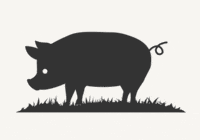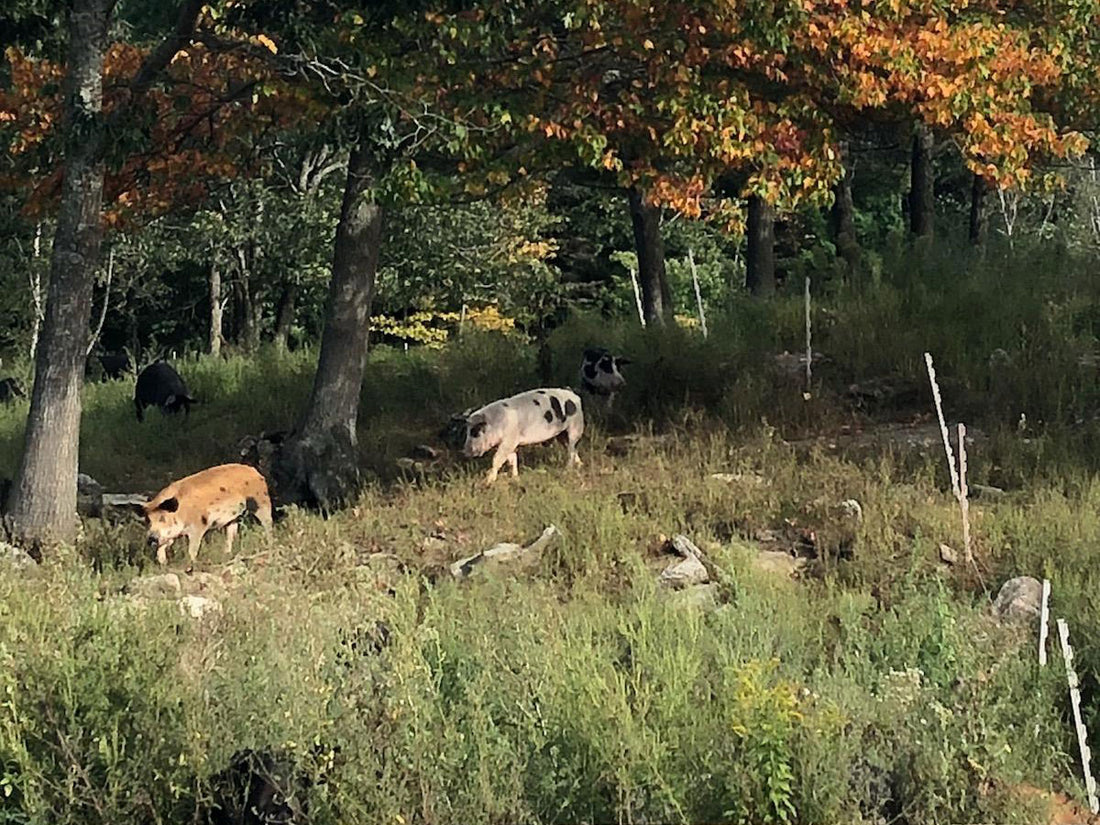Fall has always been a time of super abundance in our ecosystem. Everything seems to be in season all at once. Humans have grown accustomed to noticing the apples, pumpkins, and sweet potatoes starting in Autumn, and while these are delicious seasonal treasures, there are other resources that become abundant that we don’t really think about. Understanding the wild bounty of the woods and grasslands close to home really feels good. It helps a person stay connected to what's real in the world and what's happening in the open spaces.
On our regenerative homestead and farm, acorns are the mark of the wild plenty that few forest species fail to notice. The drop starts in mid-August and generally runs through mid-October, every other year. The first acorns to fall are usually the ones that have been affected by insects and are slightly damaged. It's like the trees know to let them go deliberately so they can pour more strength into the viable acorns that remain! A large oak can produce up to 30 pounds of acorns. We have about 60 acres of woodland that contains Red and White Oak. Being a pasture raised pig farmer, I think about my oak trees as if they were an old orchard. Imagine the oak trees as if they are apple trees you didn't plant, they are just a gift from the forest. (Maybe this is how maple syrup farmers think of their maple trees.) Wild trees, some of them very old and with a long life still ahead of them - were here before I was born and more than likely they will be here after I am gone.
Some simple math: If there are 600 fully mature oak trees in an acre, each dropping 20 pounds of acorns, that totals 1,200 pounds of acorn per acre. Multiply that by our 60 acres and we have 720,000 pounds. If there are 30 pounds of acorn to the bushel that would be 24,000 bushels. That would fill a large grain bin. However, we don’t have to spend tens of thousands of dollars on infrastructure so we can turn a blind eye to the abundance of the wild lands around us. Our pigs will gather what they can in their turn without any intervening machinery. Most of it will still end up going to the deer, turkeys, and all the little critters that go bump in the night. There is no waste in nature.
Some people ask how pigs can help improve land. We use livestock as the chief stewards of our woods. The process of succession means that the forest is always moving toward its climactic vegetative state, an old growth forest. This takes centuries to achieve and there are a few factors that slow it down. One is invasive weeds - nonnative brush and brambles. We run our pigs through the woods twice a year, once in the heat of summer when they really crave shade and then again in October for the acorn drop. We stock them fairly densely so that they can more successfully trample and root up the brambles. This type of regenerative management harms the brambles but is tolerated by the oaks.
Everytime we do this in July, I believe the forest lets out a sigh of relief. It must feel so good to have that elbow room back and have less competition for sunlight, soil nutrients and moisture in the ground. The forest also looks more pleasing to the eye. With no stewardship whatsoever from humans, these briars and brambles choke out the smaller trees and clogs up the meadows, generally making pleasant woods look more like a haunted forest.
We let the pigs back in the woods again a couple months later for the acorn drop and they love it as much as we like apple cider and pumpkin spice! They shuffle through the woods like the "truffle pigs" of Europe, looking for their bounty. Each year, I get some satisfaction out of sitting on a rock behind my house and watching one of our herds eat up the acorns. It appears that they choose one acorn at a time and make small efforts to shell it, that is to say, to remove the little acorn "cap" and the fibrous shell from the nut within. This is where the discerning pasture raised pig producer should make an observation: Diversity is good and oak trees offer a prime example. The acorns from the White Oak are sweet. They lack much in the way of tannins or tannic acid and the pigs eat them like ice cream. As a result of this lack of tannins, they also don't last long on the ground before they rot. Red Oak acorns by contrast are loaded with tannins. They are significantly less sweet AND have a significantly longer shelf life on the ground. Nature provides its bounty by spreading out the harvest in many ways. While most people don’t have pigs to gaze upon, there is always something to notice in the forest. In exploring the world around you, one begins to get the feeling that the forest is abundant and alive.

